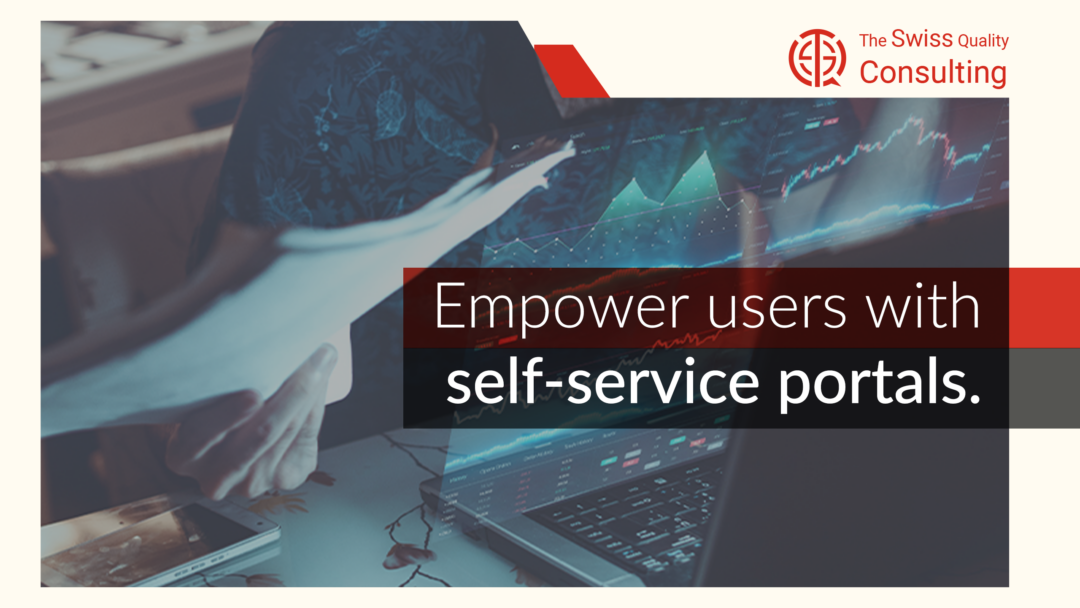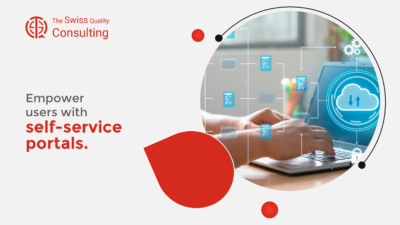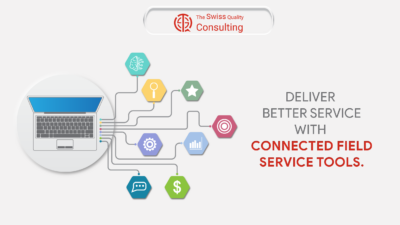Enhancing User Autonomy with Self-Service Portals:
In today’s fast-paced, tech-driven world, organizations and businesses are continually exploring innovative ways to elevate user experiences and boost customer satisfaction. One highly effective approach in this pursuit is the implementation of self-service portals, which provide users with a user-friendly platform to access resources, find solutions, and independently manage their interactions.
A self-service portal is a digital platform that empowers users to access a wealth of resources, including FAQs, knowledge bases, troubleshooting guides, and tools to manage their accounts or transactions. These portals offer a means for users to help themselves, resulting in streamlined support processes, reduced workloads, and higher user satisfaction.
1. Round-the-Clock Access to Information:
One of the significant advantages of self-service portals is the 24/7 availability of information. Users can seek answers, access documents, or retrieve data at any time, eliminating the need to wait for assistance during regular business hours. This accessibility is particularly beneficial for catering to a global audience and accommodating users in different time zones, thus enhancing overall convenience.
For instance, a financial institution’s self-service portal can grant customers the ability to access account statements, transaction history, and tax documents at their convenience, without being constrained by business hours. This provision eliminates time-zone limitations and offers users greater control over their financial information.
2. Efficient Issue Resolution:
Self-service portals empower users to independently resolve common issues they may encounter. They can access troubleshooting guides, step-by-step instructions, or video tutorials, significantly reducing the volume of support requests and shortening response times.
Consider a technology company that provides a self-service portal for its customers. Users can find comprehensive guides that help them troubleshoot common software issues, minimizing the need to contact customer support and accelerating issue resolution.
3. User Account Management:
Self-service portals often offer users the autonomy to manage their accounts, preferences, and profiles. This includes tasks such as updating personal information, changing passwords, setting notification preferences, or modifying subscription plans.
In the context of a streaming service, users can easily manage their subscription details, update payment information, and customize their content preferences through the self-service portal. This flexibility and control enhance the user experience and reduce the need for customer support interactions.
4. Access to Comprehensive Knowledge Bases:
Knowledge bases represent a vital component of self-service portals, housing an extensive collection of articles, FAQs, and guides that provide in-depth information on products, services, or topics of interest. Users can search for answers to their questions or explore relevant articles to enhance their understanding.
For example, an e-commerce platform’s self-service portal may contain a comprehensive knowledge base covering topics such as product specifications, order tracking, and return policies. This valuable resource empowers users to make informed decisions and find answers to their questions independently.
5. Service and Transaction Tracking:
Self-service portals often offer features that enable users to track their service requests and transactions in real-time. Users can monitor the status of their support tickets, service orders, or online purchases, providing transparency and peace of mind while reducing the need to contact customer support for updates.
In the context of a logistics company, customers can utilize the self-service portal to track the progress of their shipments, view delivery schedules, and confirm receipt of goods. This feature enhances the user experience by providing real-time information and reducing the necessity for customer inquiries.
6. Collaboration and User Feedback:
Many self-service portals include features for users to collaborate, share experiences, and provide feedback. Users can engage with each other, offer input on the content, suggest improvements, and seek advice from fellow users.
A software company, for example, may host a user forum within its self-service portal, where users can discuss software features, share tips, and troubleshoot issues together. This collaborative environment not only empowers users but also fosters a sense of community and engagement.
7. Mobile Accessibility:
In an age where mobile devices are ubiquitous, self-service portals often include mobile applications, ensuring that users can access information and services while on the go. These apps provide the same functionality as their web-based counterparts, enhancing convenience and user autonomy.
A self-service portal for a telecommunications provider, for instance, may offer a mobile app that allows users to manage their account, check data usage, and pay bills from their smartphones. This mobile accessibility aligns with users’ lifestyles and provides flexibility.
Self-service portals serve as a vital tool for enhancing user experiences and elevating customer satisfaction. They provide round-the-clock access to information, empower users to resolve issues independently, offer account management capabilities, house extensive knowledge bases, and facilitate service and transaction tracking. Additionally, they encourage collaboration among users and are accessible through mobile apps, offering increased convenience and autonomy to users. By empowering users to help themselves, businesses and organizations can streamline support processes, create a more user-friendly environment, and foster deeper connections with their users.
#EfficientSupport #KnowledgeBases #MobileAccessibility #SelfServicePortals #UserEmpowerment























